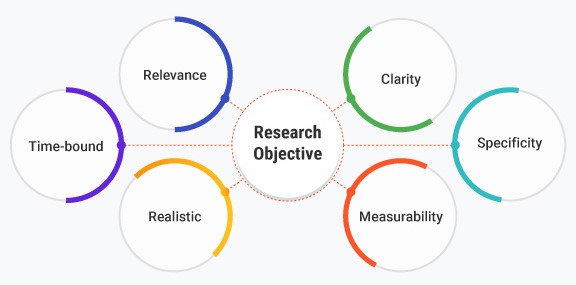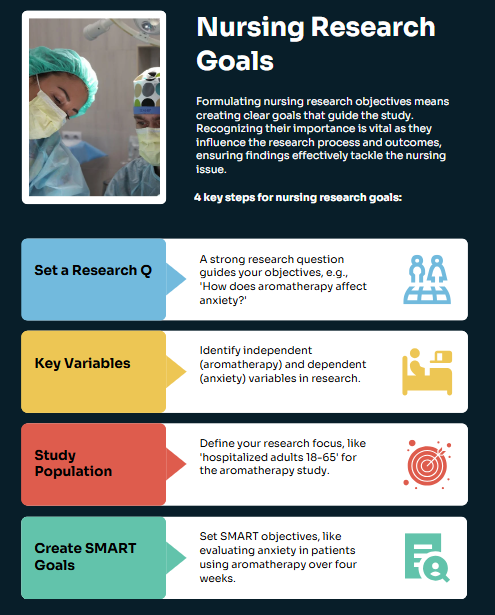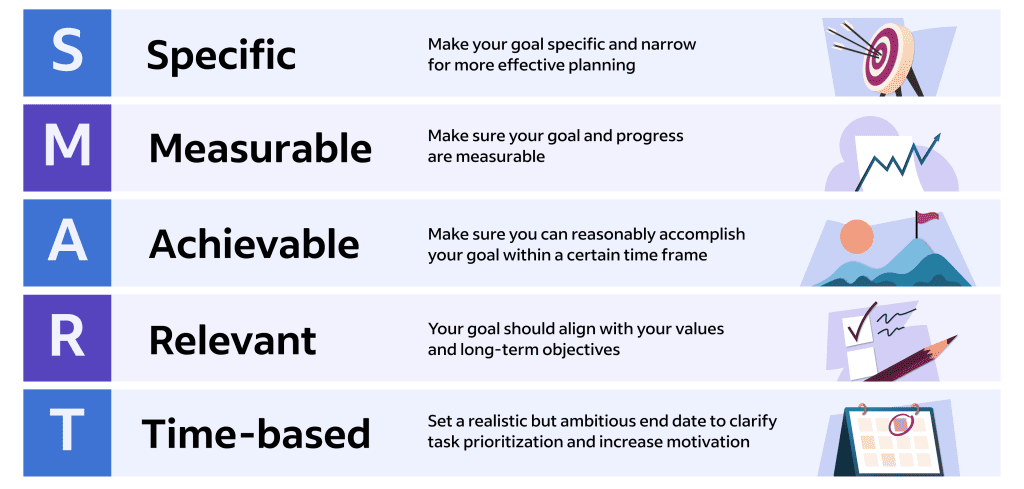
Table of Contents
Nursing research is crucial for advancing the profession, improving patient care, and shaping healthcare policies. At the heart of every successful research project lies a clearly defined set of objectives. These nursing research objectives guide the entire research process, providing a roadmap for data collection, analysis, and interpretation. Formulating strong nursing research objectives is therefore a critical first step, ensuring the research remains focused and ultimately contributes meaningfully to the body of nursing knowledge.
This article describes the process of formulating effective nursing research objectives, providing practical guidance and examples.
Understanding the Purpose of Nursing Research Objectives
Before diving into the mechanics of formulating nursing research objectives, it’s essential to understand their purpose. They serve as concise statements that specify what the researcher aims to achieve through the study. They bridge the gap between the research question and the actual research methods employed. Well-defined nursing research objectives help researchers:
- Focus the study: They prevent the research from becoming too broad or unfocused, ensuring efficient use of resources and time.
- Guide the methodology: The chosen research design, data collection methods, and analysis techniques should all align directly with the nursing research objectives.
- Enhance clarity and transparency: Clearly stated objectives make the research process transparent, allowing others to understand the study’s purpose and expected outcomes.
- Facilitate evaluation: The success or failure of the research can be readily assessed against the pre-defined nursing research objectives.
- Contribute to the body of knowledge: Achieving the nursing research objectives contributes valuable data and insights, enriching the existing knowledge base in nursing.
Key Characteristics of Effective Nursing Research Objectives
Effective nursing research objectives possess several key characteristics:
- Specific: They should clearly state what the researcher intends to measure or investigate, avoiding vague or ambiguous language.
- Measurable: The objectives should include quantifiable elements or indicators that allow for the assessment of progress and outcomes. This involves specifying the methods of data collection and analysis.
- Achievable: The objectives should be realistic and attainable within the constraints of the research project, including time, resources, and access to participants.
- Relevant: The objectives should directly address the research question and contribute meaningfully to the field of nursing. They should be aligned with existing literature and identified gaps in knowledge.
- Time-bound: The objectives should specify a timeframe for their completion, contributing to project management and ensuring timely deliverables. This is particularly important for grant applications and thesis work.

Types of Nursing Research Objectives
Nursing research objectives can be broadly classified into two main types:
- Primary Objectives: These are the main goals of the research study. They represent the central focus and the most significant contributions expected from the research. A study typically has one primary objective, though some might have a few closely related primary objectives. For instance, a study investigating the effectiveness of a new wound care technique might have a primary objective of “To determine the rate of wound healing in patients treated with the new technique compared to a standard technique.”
- Secondary Objectives: These objectives support the primary objective and provide additional insights or context. They are often exploratory in nature and can investigate related factors or outcomes. Using the same wound care example, a secondary objective might be “To assess patient satisfaction with the new wound care technique.” Another could be “To evaluate the cost-effectiveness of the new technique compared to the standard technique.” Note that the secondary nursing research objectives should always be clearly linked to and supportive of the primary objective.
Formulating Nursing Research Objectives: A Step-by-Step Approach
Formulating clear and concise nursing research objectives requires a systematic approach:
- Start with a well-defined research question: The research question provides the foundation for the objectives. It should be specific, focused, and researchable. For example, “What is the effect of aromatherapy on anxiety levels in hospitalized patients?”
- Identify the key variables: Determine the independent and dependent variables involved in the research question. In the aromatherapy example, the independent variable is aromatherapy, and the dependent variable is anxiety levels.
- Define the population: Specify the target population for the study. For the aromatherapy example, this might be “hospitalized adult patients aged 18-65 years.”
- Write specific, measurable, achievable, relevant, and time-bound (SMART) objectives: This is the core of the process. Using the example, the primary nursing research objectives might be: “To compare anxiety levels (measured using the State-Trait Anxiety Inventory) in hospitalized adult patients (aged 18-65) who receive aromatherapy compared to those who receive standard care within a four-week period.” A secondary objective might be: “To explore the relationship between patient satisfaction and anxiety levels in the two groups.”
- Ensure clarity and consistency: Review the nursing research objectives to ensure they are clear, concise, and consistent with the research question and overall study design. Avoid jargon or overly technical language.
- Seek feedback: Share the nursing research objectives with colleagues or mentors for feedback and suggestions. This collaborative process can help identify potential weaknesses or areas for improvement.

Examples of Well-Formulated Nursing Research Objectives
- Primary Objective: To determine the effectiveness of a new pain management protocol in reducing postoperative pain intensity in patients undergoing abdominal surgery (measured using a visual analog scale) within 24 hours of surgery.
- Secondary Objective: To assess the impact of the new pain management protocol on patient satisfaction with pain management (measured using a validated patient satisfaction questionnaire) within 24 hours of surgery.
- Primary Objective: To investigate the relationship between social support and adherence to medication regimens among patients with chronic heart failure (measured using a validated social support scale and medication adherence questionnaire) over a six-month period.
- Secondary Objective: To identify factors influencing medication adherence among patients with low social support.
The Common Pitfalls of Poorly Defined Nursing Research Objectives
Nursing research is crucial for advancing the profession and improving patient care. However, the foundation of any successful research project lies in clearly defined and well-crafted objectives. Ambiguous or flawed nursing research objectives can lead to wasted resources, inconclusive results, and ultimately, a failure to contribute meaningfully to the body of nursing knowledge. The following are the common mistakes researchers make when formulating their objectives and offers guidance on how to avoid them.
Too Broad or Unfocused Objectives
Instead of pinpointing a specific, measurable aspect of a phenomenon, researchers might formulate overly general statements. For instance, an objective like “To investigate the impact of stress on nurses” is far too vague. It lacks the specificity needed to guide the research design and data analysis. A stronger objective would be “To determine the correlation between perceived workload and burnout among registered nurses in intensive care units, as measured by the Maslach Burnout Inventory.” This revised objective clearly identifies the population (registered nurses in ICUs), the independent variable (perceived workload), the dependent variable (burnout), and the specific measurement tool. This level of detail is essential for effectively guiding the research process.
Confusing Objectives with Research Questions
While closely related, they serve distinct purposes. Objectives state what the researcher intends to achieve, while research questions pose specific inquiries that the study will attempt to answer. Objectives should be action-oriented statements, indicating the researcher’s intent to describe, compare, or explain a phenomenon. Research questions, on the other hand, are typically phrased as interrogatives. For example, an objective might be “To compare the effectiveness of two different wound care techniques in reducing infection rates,” while the corresponding research question might be “Which wound care technique, A or B, is more effective in reducing post-surgical infection rates?” Failing to differentiate between these two elements can lead to a muddled research design and difficulty in interpreting the findings.
Neglecting Feasibility
A third frequent error is neglecting to ensure the feasibility of the nursing research objectives. Researchers may propose ambitious goals that are impractical given the available resources, time constraints, or access to participants. For example, attempting a large-scale, multi-center study with limited funding and a short timeframe is unrealistic. It is crucial to conduct a thorough feasibility assessment before finalizing the objectives. This includes considering the accessibility of the target population, the availability of relevant data, the required expertise, and the budgetary constraints. Realistic and achievable objectives are paramount for successful completion of the research project.
Failure to Articulate the Results
Furthermore, many researchers stumble by neglecting the importance of clearly articulating the expected outcomes. Simply stating the intent to “explore” or “investigate” is not sufficient. Nursing research objectives must specify what the researcher expects to find or achieve. This requires a clear understanding of the existing literature and the development of testable hypotheses, where appropriate. The objectives should clearly indicate the type of data that will be collected and the anticipated results.
For instance, an objective might state, “To determine if the implementation of a new patient education program will significantly reduce hospital readmission rates within six months of discharge, as measured by a decrease of at least 20%.” This leaves no ambiguity regarding the expected outcome and provides a measurable benchmark for evaluating the success of the intervention.
Crafting well-defined nursing research objectives is a critical first step in any successful research endeavor. Avoiding the common pitfalls discussed above – overly broad objectives, confusion with research questions, lack of feasibility, and unclear expected outcomes – will significantly enhance the quality, rigor, and ultimately, the impact of nursing research on patient care and the advancement of the profession. By meticulously planning and clearly articulating the goals of their research, nurses can contribute significantly to the growing body of evidence-based practice.
Frequently Asked Questions about Formulating Nursing Research Objectives
Nursing research is crucial for advancing the profession and improving patient care. At the heart of any successful research project lies a clearly defined set of objectives. These nursing research objectives guide the entire process, from the design phase to data analysis and interpretation. However, formulating these objectives can be challenging for novice researchers. This section addresses some frequently asked questions to clarify the process and ensure that your research is focused and impactful.
1. What is the difference between a research question and a research objective?
While often used interchangeably, research questions and objectives serve distinct purposes. A research question poses a problem or issue that the study seeks to address. It’s exploratory and open-ended. In contrast, a research objective explicitly states what the researcher aims to achieve. It is a precise, measurable statement that outlines the specific actions required to answer the research question.
For example, a research question might be: “What is the impact of mindfulness interventions on anxiety levels in hospitalized patients?” A corresponding objective could be: “To quantitatively compare anxiety levels (measured using the State-Trait Anxiety Inventory) in hospitalized patients who received a mindfulness intervention versus those who received standard care.” The objective clearly outlines the methods (quantitative comparison, specific anxiety scale) and the expected outcome (comparison of anxiety levels). Strong nursing research objectives are directly linked to the research question and provide a roadmap for the study.
2. How do I formulate clear and concise nursing research objectives?
Clear and concise nursing research objectives are crucial for a successful research project. They should be SMART: Specific, Measurable, Achievable, Relevant, and Time-bound.
- Specific: Avoid ambiguity. Clearly define the population, intervention (if applicable), and outcome variables.
- Measurable: Specify how the outcome will be measured using quantifiable data (e.g., scales, surveys, physiological measurements). Qualitative studies will specify the methods of data analysis and interpretation.
- Achievable: Ensure the objectives are feasible within the constraints of the study’s resources (time, budget, access to participants).
- Relevant: The objectives should directly address the research question and contribute to the existing body of knowledge in nursing.
- Time-bound: Set a realistic timeframe for achieving the objectives.
Using action verbs (e.g., to determine, to compare, to evaluate, to describe) at the beginning of each objective helps to ensure clarity and precision.
3. How many nursing research objectives should I have?
The number of objectives depends on the scope and complexity of the research. A single, overarching objective can be sufficient for smaller studies. However, for larger, more complex projects, it’s often more manageable to break down the research into several specific, interconnected objectives. These objectives should logically flow from the main research question and contribute to a comprehensive answer. Avoid having too many objectives, as this can diffuse the focus and make the study unwieldy. A good rule of thumb is to have between one and three primary objectives, supplemented by secondary objectives as needed.
4. How do I ensure my nursing research objectives are aligned with my research question and hypothesis (if applicable)?
The research question, objectives, and hypothesis (if applicable) must be tightly integrated. The objectives should directly address the research question, outlining the specific steps needed to answer it. If a hypothesis is included, the objectives should be designed to test that hypothesis. For example, if the hypothesis states that “Mindfulness intervention will significantly reduce anxiety levels in hospitalized patients,” the objectives might focus on measuring anxiety levels pre- and post-intervention and comparing these levels between the intervention and control groups. The consistency between these elements ensures a cohesive and logically structured research project. Misalignment between these core elements will weaken the entire study’s validity and interpretability.
5. How do I know if my nursing research objectives are well-written?
Peer review is invaluable. Share your draft objectives with colleagues, supervisors, or mentors experienced in research to get feedback. Ask them to assess the clarity, feasibility, and alignment with your research question. Consider these questions:
- Are the objectives clearly stated and easy to understand?
- Are they specific, measurable, achievable, relevant, and time-bound (SMART)?
- Are they directly linked to the research question and hypothesis (if applicable)?
- Are they feasible within the constraints of the study?
- Do they contribute meaningfully to the existing body of nursing knowledge?
Revising your nursing research objectives based on this feedback is crucial to ensure that your research is well-designed and has the potential to make a valuable contribution to the field. Clearly defined nursing research objectives are the cornerstone of a strong and successful research project. Taking the time to carefully craft them will significantly increase the likelihood of achieving meaningful results and advancing the nursing profession.

Final Thoughts
The formulation of clear, concise, and achievable nursing research objectives is fundamental to conducting rigorous and impactful nursing research. By following a systematic approach and adhering to the principles of SMART objectives, researchers can ensure their studies are focused, transparent, and contribute significantly to improving patient care and advancing the nursing profession.
Careful consideration of these guidelines during the planning phase will lead to more successful research projects with clearer interpretations and more valuable contributions to the existing body of knowledge. The ability to articulate strong nursing research objectives demonstrates a researcher’s understanding of their field and their commitment to producing meaningful and reliable results. Investing time and effort in formulating excellent nursing research objectives is an investment in the quality and impact of the entire research endeavour.
Get Professional Help with Nursing Research
At Nursing Papers, we can help you with formulating stellar research objectives and crafting authentic nursing papers. Besides research paper writing, we also do proofreading, editing, formatting and plagiarism removal. We also have experienced writers to assist you with crafting top-notch essays, case studies and dissertations.







